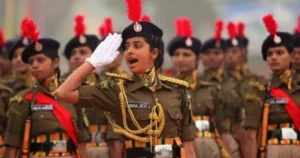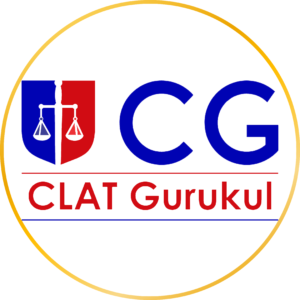
Why in News
In recent months, there have been large-scale demonstrations across India demanding that the Mahabodhi Temple in Bodh Gaya, Bihar—one of the holiest sites in Buddhism—be handed over entirely to Buddhist control. Activists seek the repeal of the Bodh Gaya Temple Act, 1949 (BGTA), which currently governs the administration of the temple. This demand highlights a decades-old dispute: while Buddhists assert that Bodh Gaya is the place where Prince Siddhartha attained enlightenment and should therefore be managed fully by Buddhists, a Hindu monastery (the Bodh Gaya Math) has historically claimed rights over the site as well.
Introduction
The Mahabodhi Temple is revered by millions of Buddhists worldwide as the sacred location of Gautama Buddha’s enlightenment under the Bodhi tree. The site’s historical legacy dates back to at least the 3rd century BCE, with various dynasties and patrons influencing its upkeep. Over centuries, the temple faced neglect, the waning of Buddhist influence in India, and changing local power dynamics. By the late 19th century, British archaeologists, especially Alexander Cunningham, spearheaded efforts to restore the temple complex, eventually recognized by UNESCO as a World Heritage Site in 2002.
Controversy over the temple’s control pivots on the BGTA, which provides for an eight-member committee—split evenly between Hindus and Buddhists—chaired ex officio by the District Magistrate of Gaya, who in turn can be a Hindu. Although the Act was initially hailed as a compromise, Buddhist groups argue that genuine control remains out of their hands. With fresh public attention focusing on whether the BGTA unduly limits Buddhist autonomy, the debate has again reached both the streets and the courts.
Below is a point-wise summary of the dispute, shedding light on the temple’s significance, the BGTA’s framework, and the historical and legal arguments shaping the conflict:
Point-wise Summary
- Historical Significance of Bodh Gaya
- Bodh Gaya is where Prince Siddhartha (the Buddha) attained enlightenment in 589 BCE.
- The Mahabodhi Temple complex evolved through centuries, with earliest structures dating to Emperor Ashoka’s era (3rd century BCE) and further expansions under later dynasties.
- The temple fell into neglect around the 13th to 19th centuries but was revived through archaeological work in the British colonial period.
- Mahant Ghamandi Giri and the Bodh Gaya Math
- A Shaivite monk, Mahant Ghamandi Giri, is traditionally believed to have arrived in Gaya around 1500 CE.
- He established a Hindu monastery (the Bodh Gaya Math) near the temple, gradually asserting control over local religious activities.
- Descendants of Mahant Giri continue to claim oversight, arguing that the Buddha is revered as an incarnation of Lord Vishnu in some Hindu traditions, thereby justifying a Hindu role in managing the site.
- The Bodh Gaya Temple Act, 1949 (BGTA)
- Passed by the Bihar Assembly, the BGTA established a committee to administer the Mahabodhi Temple.
- The committee has a chairman (the District Magistrate of Gaya, ex officio) and eight members nominated by the state government. Four must be Buddhists and four Hindus, including the “Mahant.”
- If the District Magistrate is not a Hindu, the state government nominates a Hindu to chair the committee—ensuring a Hindu always serves as chair.
- Why the BGTA Is Controversial
- Composition: Buddhists argue that, although the committee is nominally split equally, the District Magistrate’s role effectively tilts control away from Buddhists.
- Historical Claims: Hindu claimants say the temple is part of the Bodh Gaya Math’s property, citing medieval and early modern tradition. Buddhists counter that Bodh Gaya is the foremost Buddhist pilgrimage site and should be managed accordingly.
- Legal Complexities: The Places of Worship Act, 1991, states that the religious character of a place of worship must remain as it was on August 15, 1947, complicating any attempt to change the temple’s management.
- Buddhist Demands and Protests
- Protests have intensified over the last two months, calling for the full handover of the temple to Buddhists.
- These demands trace their roots to late 19th-century efforts by figures like Anagarika Dharmapala, who contested Hindu claims in court.
- Buddhist groups maintain that the BGTA violates the fundamental Buddhist character of Mahabodhi, relegating them to partial control over their own holiest shrine.
- Legal and Constitutional Considerations
- Minority Rights: Buddhist activists invoke constitutional guarantees of religious freedom and administration of their religious institutions.
- Heritage Status: UNESCO’s designation emphasizes preservation and management standards, but it does not settle local administrative disputes.
- Ongoing Litigation: Over the decades, multiple petitions have been filed in various courts, challenging or defending the BGTA’s provisions.
- Modern-Day Implications
- Cultural Diplomacy: Bodh Gaya attracts pilgrims and tourists from across Asia, making it a focal point of India’s Buddhist heritage diplomacy.
- Interfaith Relations: The dispute tests how minority and majority faiths reconcile overlapping religious claims.
- Precedent Setting: A resolution might affect broader debates over control of religious sites in India and the scope of the Places of Worship Act, 1991.
- Arguments from Both Sides
- Buddhists: Demand complete administrative autonomy, citing the site’s significance in the Buddha’s life and the perceived mismatch in a legal arrangement that places a Hindu District Magistrate as chair. They allege that the Act gives them only token representation.
- Hindus (Mahant’s Institution): Argue a longstanding historical presence at the site and revere the Buddha within a Hindu theological framework. The BGTA, they claim, fairly accounts for Buddhist representation while respecting local tradition.
- Recent Developments
- Calls for repealing the BGTA have grown louder, with nationwide demonstrations.
- Some Buddhist organizations state that existing worship practices include non-Buddhist rituals, contrary to the site’s purely Buddhist identity.
- Legal experts suggest that court challenges may hinge on interpreting the “religious character” of the temple as of 1947 and the constitutional validity of the BGTA’s composition rules.
- Looking Ahead
- The Bihar government may review or amend the BGTA if the movement gathers further momentum.
- Litigation could escalate, potentially reaching the Supreme Court for a definitive ruling on minority rights over a major religious site.
- Resolution might require a legislative compromise, balancing both heritage management and the Buddhist community’s claim to undisputed custodianship.
Notes (Explanation of Peculiar Terms)
- Mahabodhi Temple: A UNESCO World Heritage Site in Bodh Gaya, Bihar, believed to be the spot where the Buddha attained enlightenment.
- Bodh Gaya Math: A Hindu monastery whose origins are traced to Mahant Ghamandi Giri, historically asserting partial or total control over the temple.
- Bodh Gaya Temple Act, 1949 (BGTA): A legislation passed by the Bihar Assembly to govern the Mahabodhi Temple’s administration, stipulating equal Hindu and Buddhist representation but chaired by the District Magistrate of Gaya.
- Places of Worship Act, 1991: A central law maintaining the religious character of places of worship as they were on August 15, 1947, effectively barring changes or legal disputes that aim to alter that status.
- Anagarika Dharmapala: A Sri Lankan Buddhist reformer who campaigned for Buddhist control over Bodh Gaya in the late 19th and early 20th centuries.
Conclusion
The longstanding dispute over the Mahabodhi Temple’s management encapsulates deeper questions about religious autonomy, heritage preservation, and the interplay between historical custom and modern legislation. For Buddhists worldwide, Bodh Gaya remains central to the faith as the site of the Buddha’s enlightenment, creating a compelling argument that its administration should lie solely with followers of the Buddha. The Bodh Gaya Temple Act of 1949 attempted a balancing act by granting Buddhists and Hindus equal representation on the managing committee, though the District Magistrate’s role has, in practice, often led to debates about who truly wields final authority.
Hindu claimants, led by the Bodh Gaya Math, consider the temple integral to their tradition; from their perspective, the Buddha is venerated as an incarnation of Lord Vishnu, and centuries of worship at the site by Hindu ascetics lends legitimacy to their claim. On the other hand, Buddhist organizations argue that this arrangement dilutes a shrine that is uniquely theirs. They contend the law, though well-meaning at its inception, no longer aligns with modern standards of religious self-governance and minority rights.







